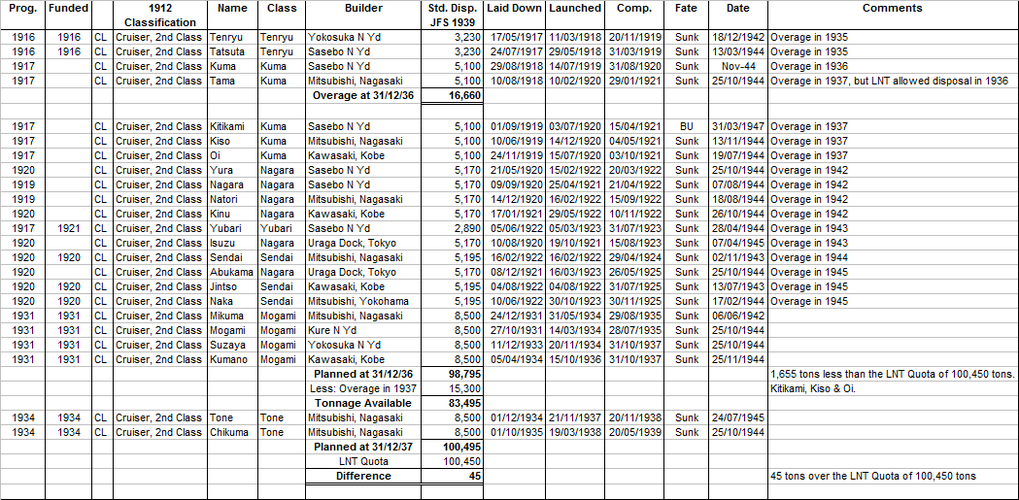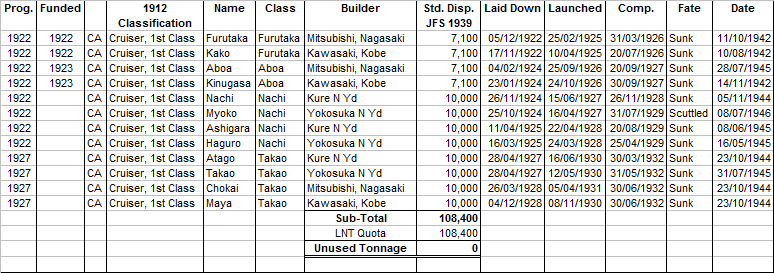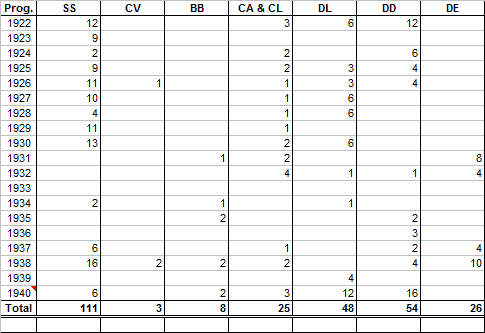AN ACT
To establish the composition of the United States Navy with respect to the categories of vessels limited by the treaties signed at Washington, February 6, 1922, and at London, April 22, 1930, at the limits prescribed by those treaties; to authorize the construction of certain naval vessels; and for other purposes.
Be it enacted by the Senate and House of Representatives of the United States of America, in Congress assembled. That the composition of the United States Navy with respect to the categories of vessels limited by the treaties signed at Washington, February 6, 1922, and at London, April 22, 1930, is hereby established at the limit prescribed by those treaties.
Sec. 2. That subject to the provisions of the treaties signed at Washington. February 6, 1922, and at London, April 22, 1930, the President of the United States is hereby authorized to undertake prior to December 31, 1936, or as soon thereafter as he may deem it advisable (in addition to the six cruisers not yet constructed under the Act approved February 13, 1929 (45 Stat. 1165), and in addition to the vessels being constructed pursuant to Executive Order Numbered 6174 of June 16. 1933), the construction of:
(a) One aircraft carrier of approximately fifteen thousand tons standard displacement, to replace the experimental aircraft carrier Langley;
(b) ninety-nine thousand two hundred tons aggregate of destroyers to replace over-age destroyers;
(c) thirty-five thousand five hundred and thirty tons aggregate of submarines to replace over-age submarines
Provided, That the President of the United States is hereby authorized to replace, by vessels of modern design and construction, vessels in the Navy in the categories limited by the treaties signed at Washington, February 6. 1922, and at London, April 22. 1930 when their replacement is permitted by the said treaties:
Provided further, That the President is hereby authorized to procure the necessary naval aircraft for vessels and other naval purposes in numbers commensurate with a treaty navy:
Provided further, That the first and each succeeding alternate vessel of each category, except the fifteen-thousand-ton aircraft carrier, upon which work is undertaken, and the main engines, armor, and armament for such vessels, the construction and manufacture of which is authorized by this Act, shall be constructed or manufactured in the Government navy yards, naval stations, naval gun factories, naval ordnance plants, or arsenals of the United States, except such material or parts as were not customarily manufactured in such Government plants prior to February 13, 1929 :
Provided further, That, if inconsistent with the public interests in any year to have a vessel or vessels constructed as required above, the President may have such vessel or vessels built in a Government or private yard as he may direct.
That not less than 10 per centum of the aircraft, including the engines therefor, the procurement of which is authorized by this Act and hereafter undertaken, shall be constructed and/or manufactured in Government aircraft factories and/or other plants or factories owned and operated by the United States Government.
The foregoing paragraph is subject to the following conditions:
(1) That if it shall be determined by the President that present plants, factories, and equipment owned by the Government are not such as to permit the construction and/or manufacture of the said aircraft and/or engines in such Government plants and factories, in the proportions herein specified and required, then and in that event such requirement may be suspended in whole or in part by his order. However, in the event of such order of suspension being made by the President, then at his discretion the existing plants, factories, and facilities now owned and/or operated by the Government shall forthwith be expanded and equipped to enable the Government to construct, manufacture, and repair not less than 10 per centum of its naval aircraft therein, except that it shall be discretionary with the President as to the per centum constructed and/or manufactured in Government plants if he should find it impracticable for the Government to undertake the construction and/or manufacture of not less than 10 per centum of its naval aircraft therein.
(2) The President is also authorized to employ Government establishments in any case where—
(a) It should reasonably appear that the persons, firms, or corporations, or the agents therefor, bidding for the construction of any of said aircraft, engines, spare parts, or equipment have entered into any combination, agreement, or understanding the effect, object, or purpose of which is to deprive the Government of fair, open, and unrestricted competition in letting contracts for the construction of any of said aircraft, engines, spare parts, or equipment, or—
(b) Should it reasonably appear that any person, firm, or corporation, or agents thereof, being solely or peculiarly in position to manufacture or furnish the particular type or design of aircraft, engines, spare parts, or equipment required by the Navy, in bidding on such aircraft, engines, spare parts, or equipment, have named a price in excess of cost of production plus a reasonable profit, as provided in section 3 of this Act.
The funds necessary for the enlargement and expansion of such existing plants and facilities now owned by the Government for the construction and manufacture of naval aircraft, are hereby authorized to be appropriated.
Sec. 3. The Secretary of the Navy is hereby directed to submit annually to the Bureau of the Budget estimates for the construction of the foregoing vessels and aircraft ; and there is hereby authorized to be appropriated such sums as may be necessary to carry into effect the provisions of this Act:
Provided, That no contract shall be made by the Secretary of the Navy for the construction and/or manufacture of any complete naval vessel or aircraft, or any portion thereof, herein, heretofore, or hereafter authorized unless the contractor agrees—
(a) To make a report, as hereinafter described, under oath, to the Secretary of the Navy upon the completion of the contract.
(b) To pay into the Treasury profit, as hereinafter provided shall be determined by the Treasury Department, in excess of 10 per centum of the total contract price, such amount to become the property of the United States: Provided, That if such amount is not voluntarily paid the Secretary of the Treasury may collect the same under the usual methods employed under the internal revenue laws to collect Federal income taxes.
(c) To make no subdivisions of any contract or subcontract for the same article or articles for the purpose of evading the provisions of this Act, but. any subdivision of any contract or subcontract involving an amount in excess of $10,000 shall be subject to the conditions herein prescribed.
(d) That the manufacturing spaces and books of its own plant, affiliates, and subdivisions shall at all times be subject to inspection and audit by any person designated by the Secretary of the Navy, the Secretary of the Treasury, and/or by a duly authorized committee of Congress.
(e) To make no subcontract unless the subcontractor agrees to the foregoing conditions.
The report shall be in form prescribed by the Secretary of the Navy and shall state the total contract price, the cost of performing the contract, the net income, and the per centum such net income bears to the contract price. A copy of such report shall be transmitted to the Secretary of the Treasury for consideration in connection with the Federal income tax returns of the contractor for the taxable year or years concerned.
The method of ascertaining the amount of excess profit to be paid into the Treasury shall be determined by the Secretary of the Treasury in agreement with the Secretary of the Navy and made available to the public. The method initially fixed upon shall be so determined on or before June 30, 1934:
Provided, That in any case where an excess profit may be found to be owing to the United States in consequence hereof, the Secretary of the Treasury shall allow credit for any Federal income taxes paid or remaining to be paid upon the amount of such excess profit.
The contract or subcontracts referred to herein are limited to those where the award exceeds $10,000.
Sec. 4. That in the event of international agreement for the further limitations of naval armament to which the United States is signatory, the President is hereby authorized and empowered to suspend so much of its naval construction as has been authorized as may be necessary to bring the naval armament of the United States within the limitation so agreed upon, except that such suspension shall not apply to vessels actually under construction on the date of the passage of this Act.
Approved, March 27, 1934.





